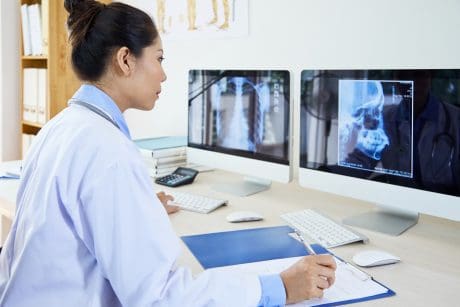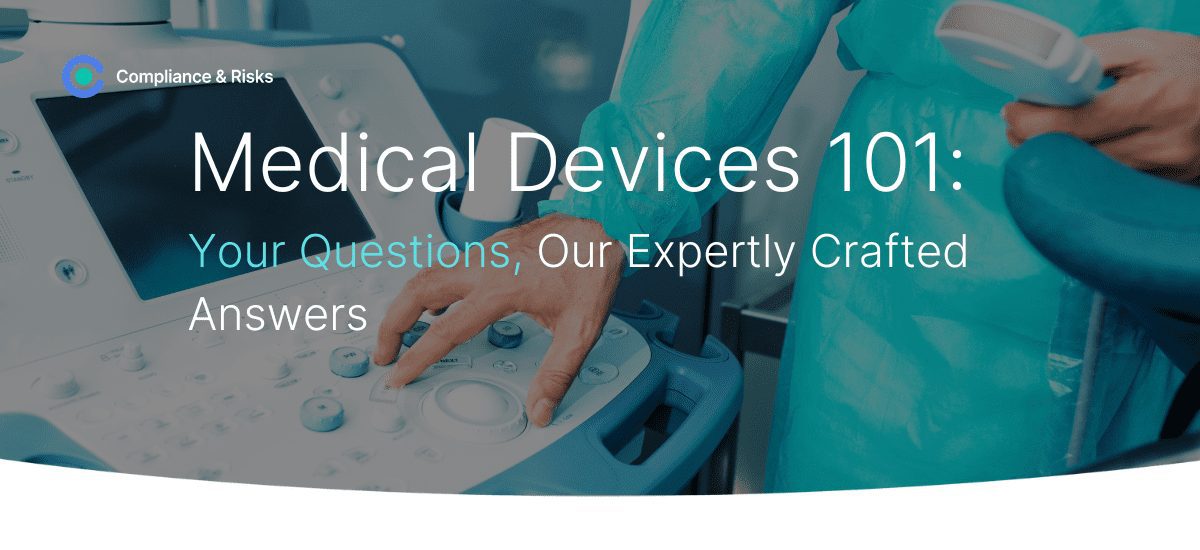
Medical Devices 101 | Your Questions | May 2024

Medical devices face a unique regulatory landscape that has been increasingly complicated by several factors in recent years.
The demand for more sustainable technology is being driven by both consumer demand and legislators, leading to regulatory implications. Global events such as Brexit and COVID-19 have also created unprecedented challenges.
As devices become increasingly integrated with artificial intelligence and an internet connection, new cybersecurity and data protection legislation is racing to keep up.
And on top of all this, the new regulatory framework for IVDR and proposed amendments for the registration, and inspection of medical devices under MDR means staying ahead is more critical than ever.
In this series, we gather some of the most interesting recent inquiries from Compliance & Risks customers regarding medical device regulatory updates globally.
Question 1: Is the EU Batteries and Waste Batteries, Regulation (EU) 2023/1542 applicable to medical devices?
According to Article 1(3), the Regulation 2023/1543 on Batteries and Waste Batteries applies to all categories of batteries placed on the market or put into service within the EU, regardless of whether they were produced in the Union or imported and regardless of their shape, volume, weight, design, material composition, chemistry, use or purpose.
Specifically, Article 11 on Removability and replaceability of portable batteries and LMT batteries, covers professional medical imaging and radiotherapy devices and in vitro diagnostic medical devices. They have to be designed in such a way as to make the battery removable and replaceable only by independent professionals. According to Article 11(2)(b): “By way of derogation from paragraph 1, the following products incorporating portable batteries may be designed in such a way as to make the battery removable and replaceable only by independent professionals: … professional medical imaging and radiotherapy devices, as defined in Article 2, point (1), of Regulation (EU) 2017/745, and in vitro diagnostic medical devices, as defined in Article 2, point (2), of Regulation (EU) 2017/746.”
Question 2: Are medical devices in scope of the Italian Plastic Tax Law?
As per Italy: Introduction of the Plastic Tax, Law No. 160/2019 – Amendment – (on postponement of the plastic tax until 1 July 2024) Law No. 213/2023, the plastic tax will come into effect from 1st July 2024. The legal basis for the plastic tax may be found under Articles 1(634) to 1(658) of Law No. 160/2019.
The tax applies to manufactured articles in plastic for single use, also referred to as “MACSI”, which have or are intended to have the function of containment, protection, manipulation or delivery of goods or food. MACSI includes single use plastics in the form of sheets, films or strips, that are made with the use of plastic materials consisting of organic polymers of synthetic origin and are not intended, designed or placed on the market to be reused during their life cycle or to be reused for the same purpose for which they were designed.
The following are excluded from the scope of this tax:
- MACSIs which are compostable in accordance with the UNI EN 13432:2002;
- Medical devices which are classified by the Single Commission on Medical Devices; and
- MACSI used to contain and protect medicinal preparations.
The following are required to pay the tax:
- The manufacturer (for MACSI produced in the national territory);
- The person who purchases the MACSIs in the exercise of an economic activity or the transferor if the MACSIs are purchased by a private consumer; and
- The importer (for MACSIs coming from third countries).
Question 3: Do the Australian Proposed IChEMS decision from April 2024 contain any exemption where these chemicals are present in medical devices?
As per Australia: IChEMS Proposed Regulatory Scheduling Decisions for Dechlorane Plus, UV-328, Melamine Boric Acid and its Precursors and β-Alanine, N-(2-hydroxyethyl)-N-[2-[(1- oxooctyl)amino]ethyl]-, Consultation Paper, April 2024, of the five substances subject to the consultation, only two – Dechlorane Plus® and UV-328 – are considered to be of highest concern.
In line with the Stockholm Convention on Persistent Organic Pollutants (POPs), their manufacture, import and use in articles will be prohibited from 01 July 2026. The included time-limited exemptions/derogations do not specifically apply to medical devices.
Stay Compliant With Global Medical Device Regulations:
Catch up on our medical device updates with your coffee here:
- Medical Device Regulation Checklist: Brazil
- Regulatory Trends in Medical Devices: A 12-18 Month Outlook
- Software As A Medical Device – Definition and Classification in the EU, USA, China, and Japan
- European Union (EU) In Vitro Diagnostic Regulation 2017/746 (IVDR) and Cybersecurity
Have you got a Medical Device related query?
Many of the above questions were submitted and answers were conveyed by Compliance & Risks customers via the “Ask Our Experts” button in C2P.
Clients use AOE to ask about the latest proposed, enacted, and amended regulations and mandatory standards applicable to their products and geographies of interest.
When AOE questions can be answered in 30 minutes or less, Compliance & Risks’ subject matter experts answer them at no charge!
To learn more about C2P and how Compliance & Risks SMEs can help you with your questions, contact us today.
Meet our Experts

Global Regulatory Compliance Team
Our team of experts will elevate your strategic edge by addressing questions about laws and regulations. Fluent in almost 30 languages and backed by an extensive database of 90,000+ sources, our experts bring unparalleled knowledge to the table. Moreover, our expert team is dedicated to educating your organization, fostering better engagement, and ensuring your compliance and risk management strategies are second to none. With our team of seasoned professionals by your side, you’ll gain a competitive edge in navigating the complex landscape of compliance management, gaining deeper insights and valuable guidance.


